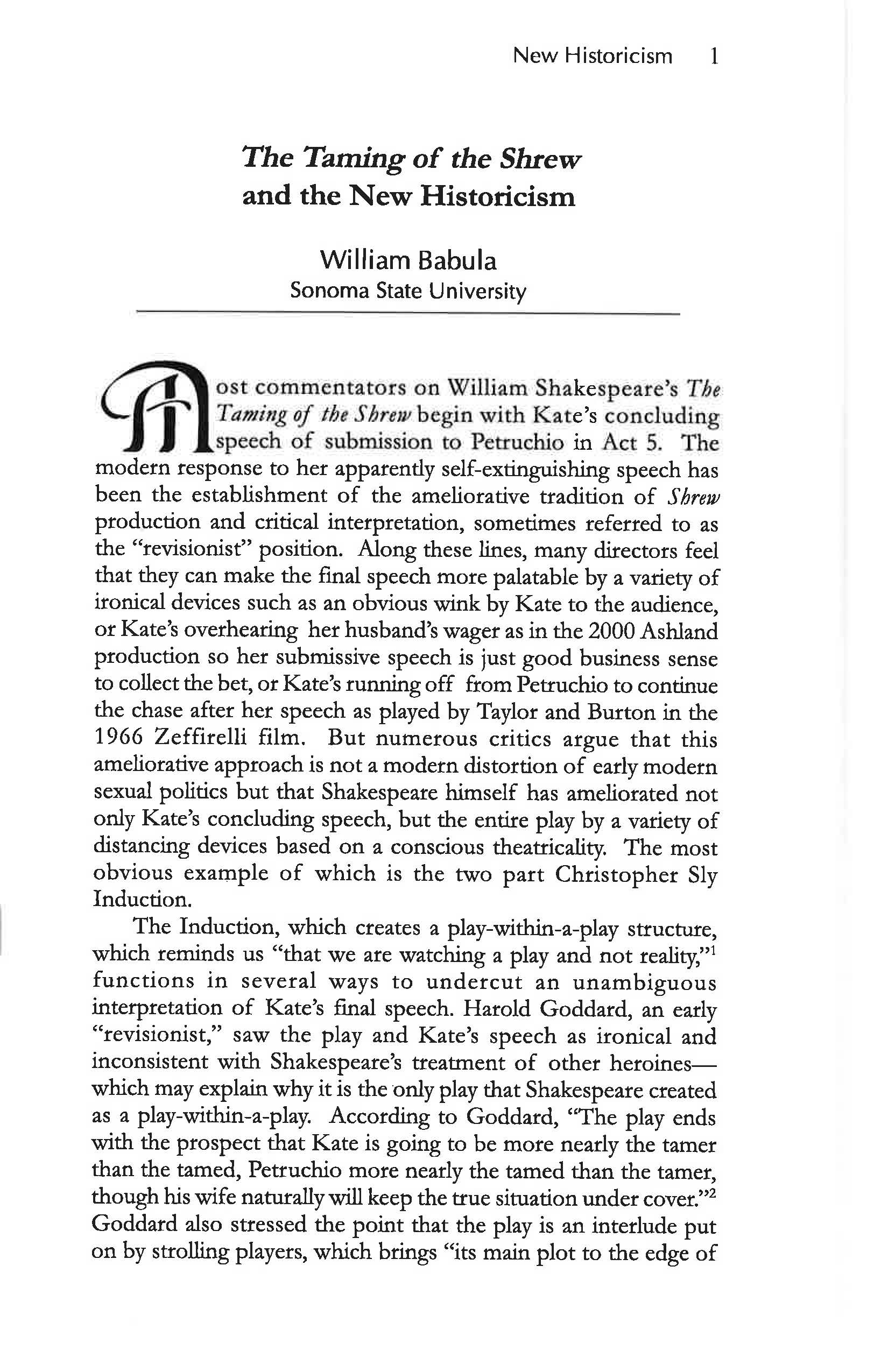The Taming of the Shrew and the New Historicism
Main Article Content
Abstract
Most commentators on William Shakespeare’s The Taming of the Shrew begin with Kate’s concluding speech of submission to Petruchio in Act 5. The modern response to her apparently self-extinguishing speech has been the establishment of the ameliorative tradition of Shrew production and critical interpretation, sometimes referred to as the “revisionist” position. Along these lines, many directors feel that they can make the final speech more palatable by a variety of ironical devices such as an obvious wink by Kate to the audience, or Kate’s overhearing her husband’s wager in the 2000 Ashland production so her submissive speech is just good business sense to collect the bet, or Kate’s running off from Petruchio to continue the chase after her speech as played by Taylor and Burton in the 1966 Zeffirelli film. But numerous critics argue that this ameliorative approach is not a modern distortion of early modern sexual politics but that Shakespeare himself has ameliorated not only Kate’s concluding speech, but the entire play by a variety of distancing devices based on a conscious theatricality. The most obvious example of which is the two part Christopher Sly Induction.
